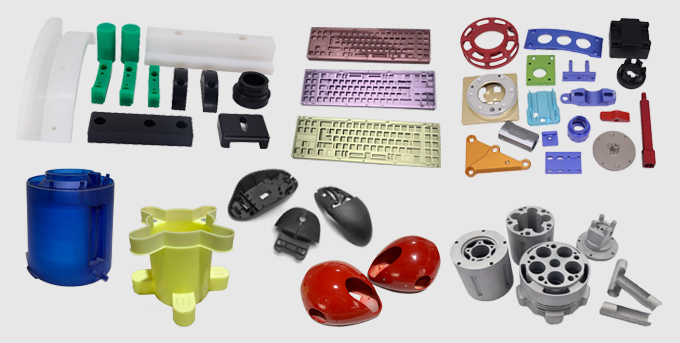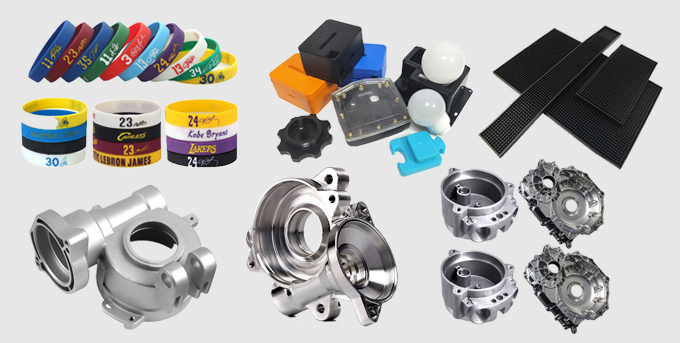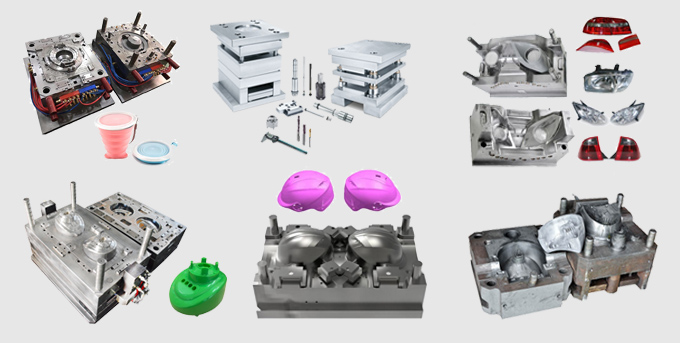


CNC prototype, also known as Computer Numerical Control prototype, is a manufacturing process that uses computer-aided design (CAD) software and computer-aided manufacturing (CAM) software to create a physical product from a digital design. This process offers a wide range of advantages over traditional manufacturing methods, such as accuracy, precision, and speed. In this article, Xiamen Wiesel Technology Co., Ltd. will explore the technical attributes of CNC prototype products and how they make this process an essential tool for modern manufacturing.
1. High Precision and Accuracy
One of the key technical attributes of CNC prototype products is their high precision and accuracy. This is achieved through the use of advanced computer software, which allows for precise control over the cutting tools and the material being machined. Unlike traditional methods where human error can affect the final product, CNC prototypes are produced with minimal human involvement, ensuring consistency and accuracy.
2. Versatility and Flexibility
CNC prototype products are versatile and can be used to create a wide range of products, from small and simple parts to large and complex components. This is because the design process is entirely digital, and any changes can be easily made by adjusting the software. This flexibility allows for rapid prototyping, where multiple design iterations can be quickly produced and tested before finalizing the product design.
3. Faster Production Time
The use of CNC technology allows for faster production times compared to traditional manufacturing methods. This is because it eliminates the need for manual labor, resulting in a more efficient process. CNC machines can also run 24/7, which means they can produce products at a much faster rate, reducing lead times and increasing productivity.
4. Cost Efficiency
CNC prototype products are cost-efficient, especially for large production runs. Once the initial programming is done, the production process becomes automated, reducing the need for human labor and resulting in lower labor costs. This also reduces the chances of human error, which can be costly and time-consuming to fix. Additionally, the versatility of CNC machines eliminates the need for multiple machines for different products, further reducing costs.
5. Complex Geometries
With the use of multi-axis CNC machines, the production of intricate and complex geometries has become possible. This includes 3D sculptural surfaces, angled holes, and curved profiles, which were once difficult or impossible to produce with traditional methods. This level of complexity is achieved with high precision and accuracy, resulting in a superior finished product.
6. Superior Surface Finishing
CNC prototype products typically have superior surface finishes compared to manually machined products. This is because the process eliminates the impact of human imperfections, resulting in cleaner and smoother surfaces. Additionally, CNC machines can be equipped with various finishing tools, such as sanders, grinders, and polishers, to further improve the surface quality.
7. Consistency and Reproducibility
CNC prototype products offer high levels of consistency and reproducibility, ensuring that each product is identical to the others. This is especially important for industries that require exact specifications, such as aerospace and medical industries. These products undergo rigorous testing and have strict quality control measures, which are easily achievable with CNC prototyping.
8. Material Variety
CNC prototype products can be made from a wide range of materials, including metals, plastics, and composites. This allows for the production of products with different mechanical properties, such as strength, weight, and flexibility, depending on the specific use case. The use of different materials also allows for cost optimization, as designers can choose the most suitable material for the product.
9. Improved Safety
The use of CNC prototype products results in improved safety compared to traditional methods. With no manual labor involved, workers are not exposed to potential hazards such as sharp objects, chemical fumes, or loud noises. This ensures a safer workplace and reduces the risk of accidents.
the technical attributes of CNC prototype products make them an essential tool for modern manufacturing. Their precision, versatility, cost efficiency, and ability to produce complex geometries and superior surface finishes make them a preferred choice for many industries. As technology continues to advance, we can expect to see even more impressive capabilities and benefits from CNC prototyping in the future. 
CNC prototype--An Ultimate FAQ Guide:
• What is CNC prototype technology?
CNC prototype technology is a rapid prototyping technology that is processed by computer-controlled CNC machine tools. It can quickly produce product prototypes with high precision and complex shapes.
• What are the technical advantages of CNC prototype products?
CNC prototype products have obvious advantages in accuracy, speed, cost and flexibility. Its high-precision processing and rapid production capabilities can greatly shorten the product development cycle and reduce production costs.
• In what fields are CNC prototype products usually used?
CNC prototype products are widely used in machinery manufacturing, automobiles, aerospace, electronics, medical equipment and other fields, and can meet the rapid development needs of product samples in different industries.
• What processing materials capabilities does the CNC prototype product have?
CNC prototype technology can process a variety of materials, such as metal materials (such as aluminum, copper, steel, etc.), plastic materials (such as ABS, PC, etc.), wood, etc., to meet the needs of different customers.
• What are the accuracy requirements for CNC prototype products?
CNC prototype products usually have high precision requirements, and their errors are usually controlled within 0.01mm, which can meet the precision processing needs of complex products.
• What is the processing process of CNC prototype products?
The processing process of CNC prototype products is divided into three steps: CAD design, CAM programming and CNC processing. First, the product is designed through the design software, then the CAM software generates the processing program, and finally the CNC machine tool performs processing according to the program.
• What surface treatments do CNC prototype products usually have?
The surface treatment of CNC prototype products includes spraying, sandblasting, laser engraving, electroplating and other methods, which can increase the beauty and durability of the product.
• How long is the production cycle of CNC prototype products?
Because CNC prototype technology has rapid production capabilities, the production cycle of general products is 3-5 working days, which can greatly shorten the product development cycle.
• What are the design file formats for CNC prototype products?
Usually the design file format of CNC prototype products can be STL, STEP, IGES, DXF and other formats, which can meet the needs of different design software.
• What is the process control system of CNC prototype products?
The process control system of CNC prototype products refers to the software system that controls the operation of CNC machine tools through computers. It is used to guide processing procedures, monitor processing processes and inspect